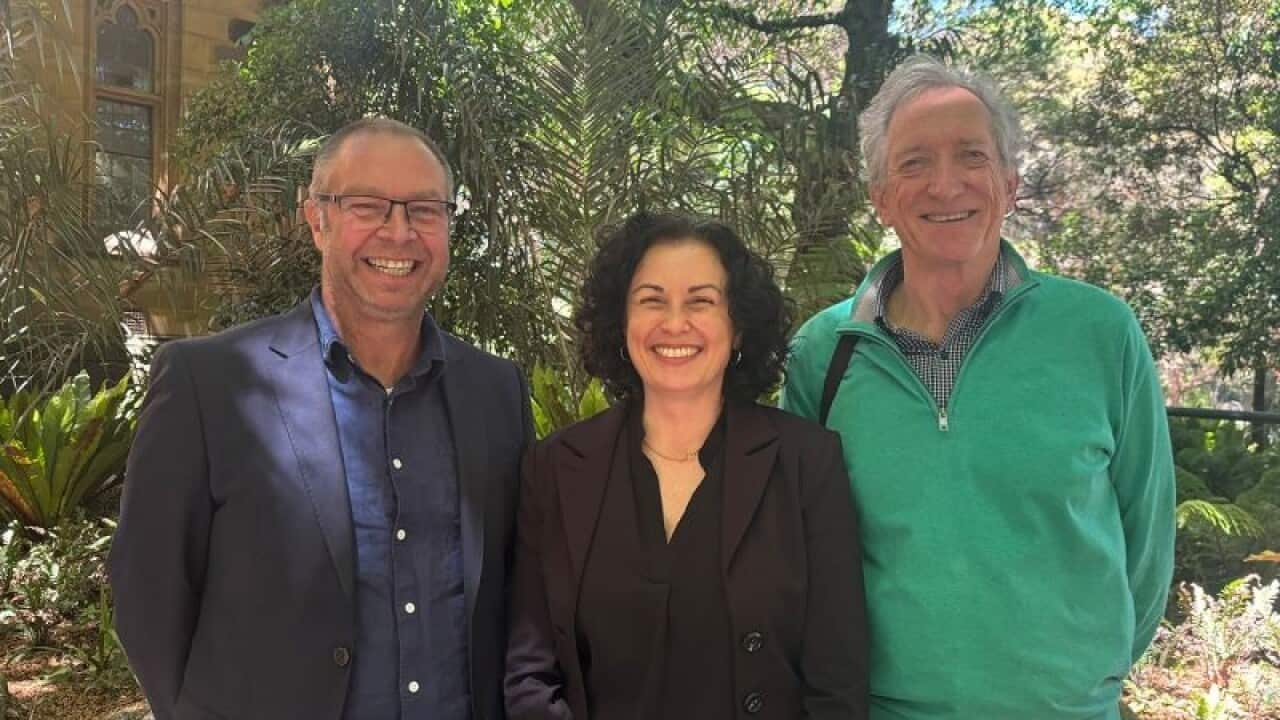TRANSCRIPT
In the grand central hall of Manchester Museum, three representatives of the Anindilyakwa community are embracing museum staff.
The handover of cultural items taken to England more than half a century ago has been a moving process for all involved.
Noeleen Lalara is an Anindilyakwa elder.
“For me, it’s emotional, I’m just talking from my heart, it’s emotional to me. I’m happy and I’m proud for my people.”
The 174 items being returned to country include baskets, spears, armbands, and intricately decorated shell dolls, which have inspired the present-day Groote Island community to create new dolls, strengthening cross-generation bonds.
Maicie Lalara is an Anindilyakwa woman.
“We do learning on country with the school kids, going out collecting the shells, painting it with okre… the kids loved it and we carry on following our ancestors.”
The items had been collected in the 1950s by English anthropologist Professor Peter Worsley… who was researching the lives of Aboriginal people and travelled to Groote Island.
His daughter Deborah attended today’s handover, meeting the descendants of women his father had often mentioned to her during childhood.
“I’d heard the stories of being on Groote all my life, he continued to talk about that time all his life… I just wish he could know that this is what’s happened.”
Professor Worsley donated his collection to Manchester Museum when he retired in the 1980s.
Over the past three years, museum experts travelled to Groote, and worked with the Anindilyakwa Land Council to determine where the items should be kept.
“There is a different quality to a return process when you are dealing with real people face to face and really listening. The emotion at the ceremony today has been carried through the whole process of working together. We know this matters, we can feel it.”
It’s hoped this close collaboration will serve as a model for future repatriation projects; most British museums aren’t as willing to facilitate the return of culturally significant items.
Leonard Hill is the acting CEO of the Australian Institute of Aboriginal and Torres Straight Islander studies.
“Events such this and relationships and opportunities in returning material such as this provides a level of awareness to the importance of returning cultural material back home. I hope it provides a bit of a trigger to other institutions that there is genuine goodwill and willingness on communities and institutions like AIATSIS to work with partners overseas to return materials.”
There are an estimated 39,000 Indigenous artefacts on display and in museum storerooms across the United Kingdom.
Manchester Museum has several hundred in its collection, so these 174 are just a drop in the pond.
But each individual item is of great importance to the community that receives it, as Anindilyakwa woman Amethea Mamarika explains.
“Seeing our ancestors artefacts, first time I seen it, it made me cry.”
The items will be welcomed home with a special ceremony later this year.













